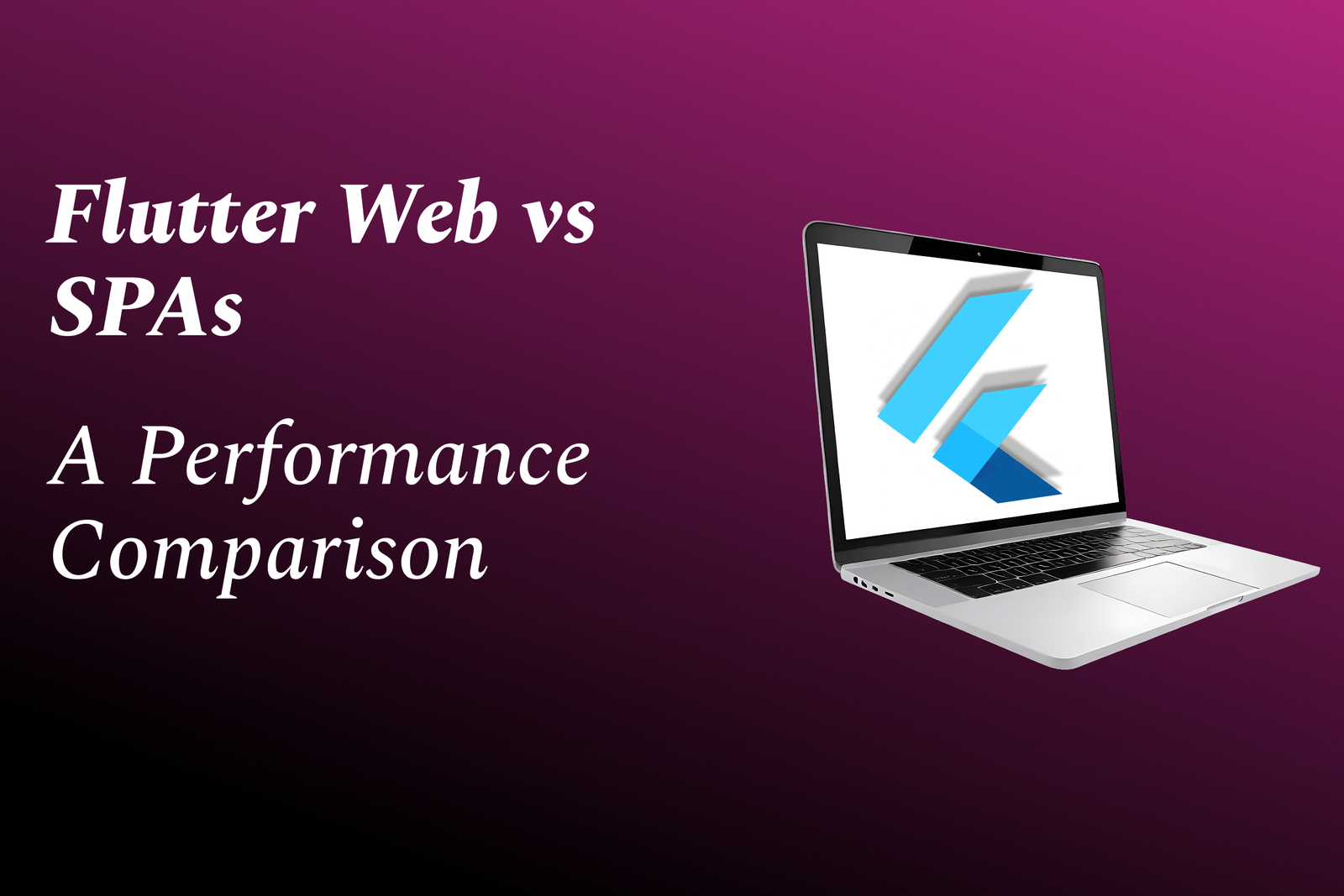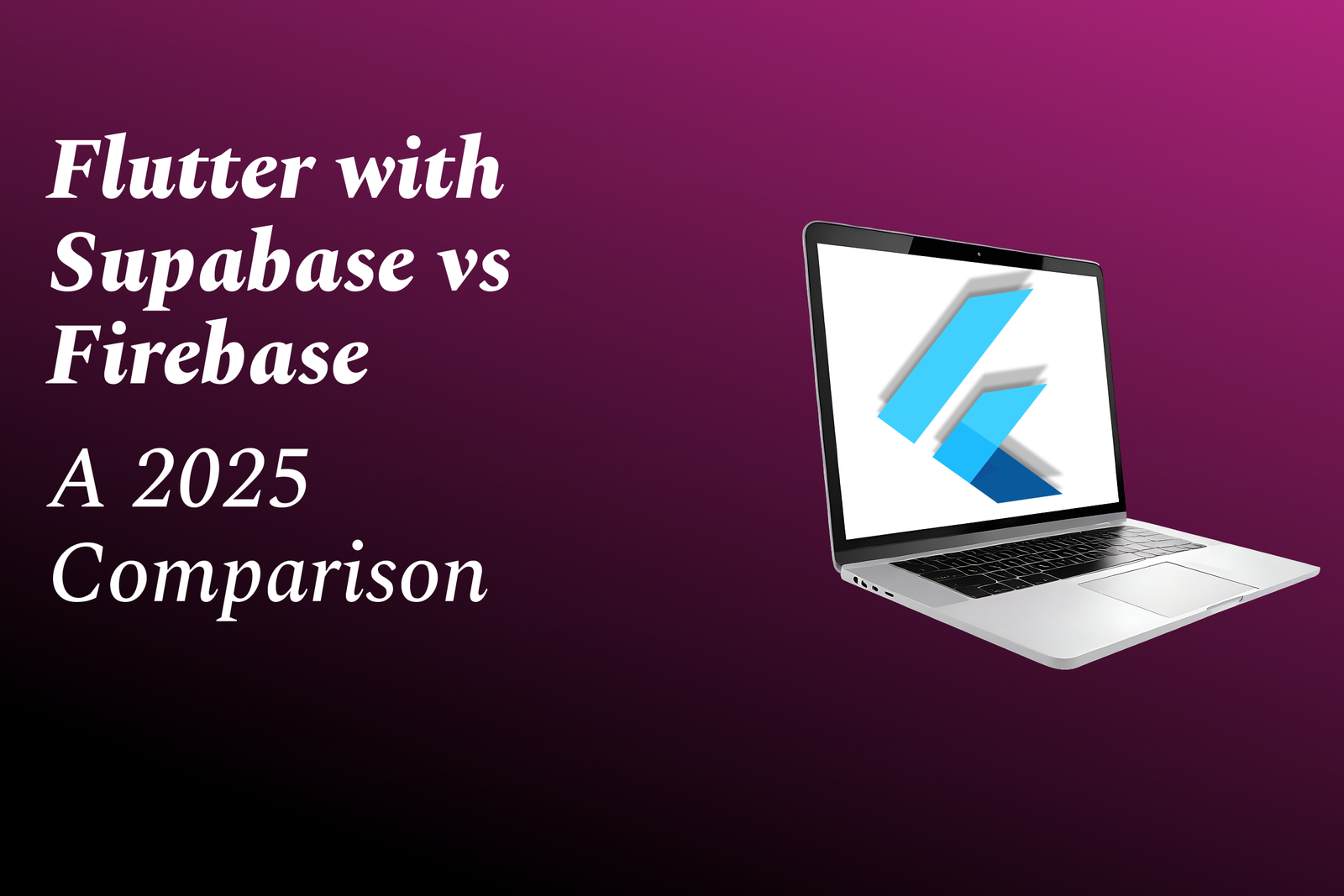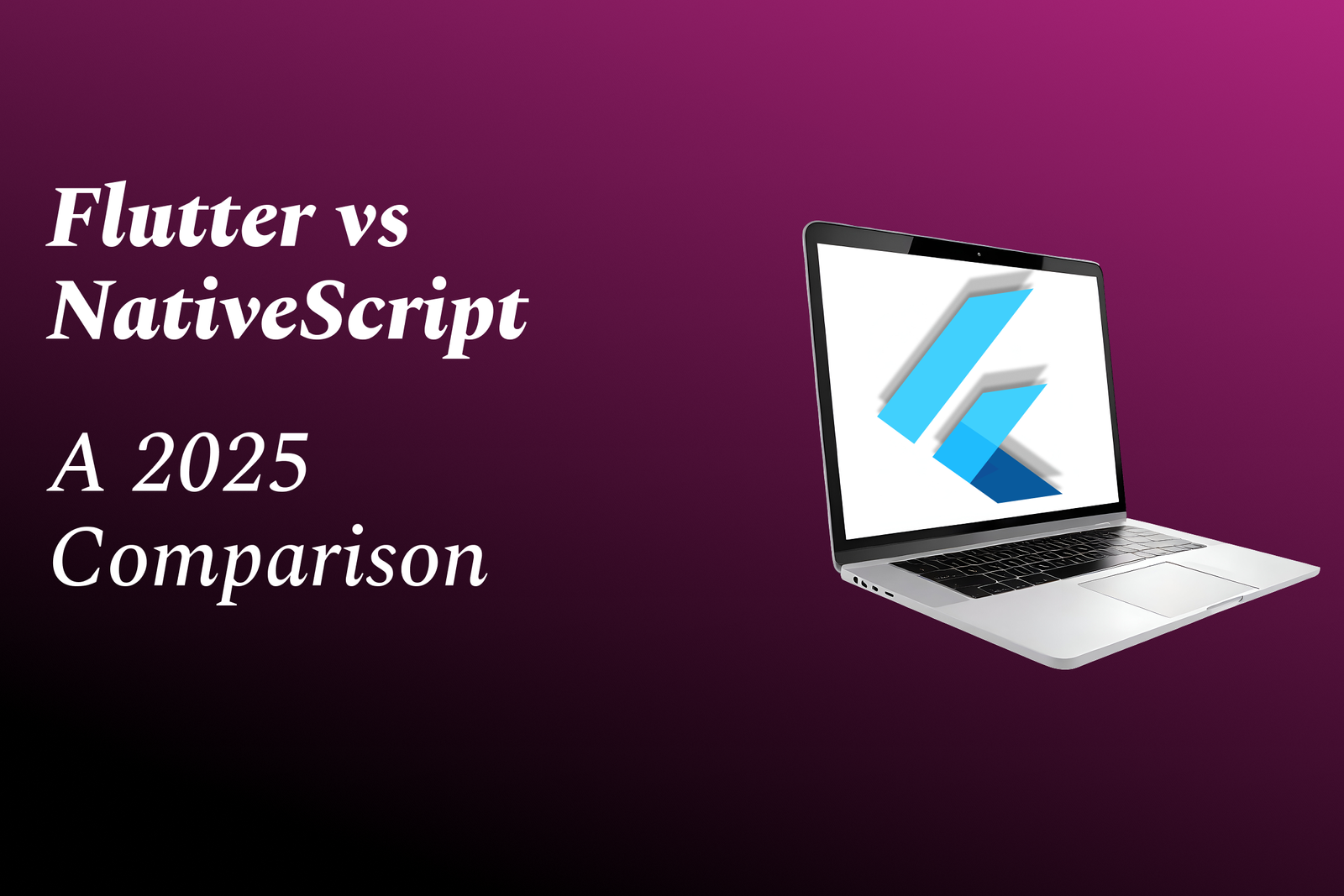Flutter Web Vs SPAs: A Performance Comparison
Flutter Web and traditional single-page applications (SPAs) differ in rendering and performance: Flutter Web compiles Dart into JS and draws the UI via a canvas-based engine (CanvasKit/WebGL) or an HTML renderer, offering pixel-perfect, native-like visuals but usually larger initial bundles and slower first paint, while SPAs built with React/Angular/Vue use the browser DOM, typically enabling smaller payloads, faster initial loads, easier code-splitting and progressive server-side rendering for better SEO. The practical trade-off is clear: choose Flutter Web for consistent, graphics-heavy interfaces and cross-platform parity; choose a traditional SPA for faster load times, SEO needs, and finer-grained incremental rendering.
Flutter Web Vs SPAs: A Performance Comparison
Flutter Web and traditional SPAs differ mainly in how they render and load, creating distinct performance trade-offs: Flutter Web compiles Dart to JavaScript and paints the UI via a canvas or WebGL layer, giving pixel-perfect, consistent cross-platform visuals but typically larger initial bundles and slower first paint, making it ideal for graphics-rich, interactive apps where visual parity matters; SPAs built with React/Angular/Vue leverage the browser DOM, enabling smaller payloads, faster initial loads, easier code-splitting and server-side rendering for better SEO, which suits content-heavy or SEO-sensitive applications—knowing these differences helps you pick the approach that balances startup speed, runtime smoothness, and development priorities.
To Download Our Brochure: **https://www.justacademy.co/download-brochure-for-free
**
Message us for more information: **https://api.whatsapp.com/send?phone=919987184296
**
Flutter Web and traditional SPAs differ mainly in how they render and load, creating distinct performance trade offs: Flutter Web compiles Dart to JavaScript and paints the UI via a canvas or WebGL layer, giving pixel perfect, consistent cross platform visuals but typically larger initial bundles and slower first paint, making it ideal for graphics rich, interactive apps where visual parity matters; SPAs built with React/Angular/Vue leverage the browser DOM, enabling smaller payloads, faster initial loads, easier code splitting and server side rendering for better SEO, which suits content heavy or SEO sensitive applications—knowing these differences helps you pick the approach that balances startup speed, runtime smoothness, and development priorities.
Course Overview
This JustAcademy course compares Flutter Web and traditional SPAs, covering performance metrics, profiling, optimization techniques, and hands-on projects to help developers choose and tune the best architecture.
Course Description
JustAcademy’s “Flutter Web vs SPAs: A Performance Comparison” teaches rendering, profiling, benchmarking, and optimization through real-time projects, helping developers choose and certify the best web architecture.
Key Features
1 - Comprehensive Tool Coverage: Provides hands-on training with a range of industry-standard testing tools, including Selenium, JIRA, LoadRunner, and TestRail.
2) Practical Exercises: Features real-world exercises and case studies to apply tools in various testing scenarios.
3) Interactive Learning: Includes interactive sessions with industry experts for personalized feedback and guidance.
4) Detailed Tutorials: Offers extensive tutorials and documentation on tool functionalities and best practices.
5) Advanced Techniques: Covers both fundamental and advanced techniques for using testing tools effectively.
6) Data Visualization: Integrates tools for visualizing test metrics and results, enhancing data interpretation and decision-making.
7) Tool Integration: Teaches how to integrate testing tools into the software development lifecycle for streamlined workflows.
8) Project-Based Learning: Focuses on project-based learning to build practical skills and create a portfolio of completed tasks.
9) Career Support: Provides resources and support for applying learned skills to real-world job scenarios, including resume building and interview preparation.
10) Up-to-Date Content: Ensures that course materials reflect the latest industry standards and tool updates.
Benefits of taking our course
Functional Tools
1 - Flutter SDK and Dart tools
A hands on introduction to the Flutter SDK and Dart toolchain used to build Flutter Web apps and understand compilation modes.
Training covers stable, beta channels, flutter build web variants (debug/profile/release) and dart2js specifics for code size.
Students learn to configure web renderers (HTML vs CanvasKit) and optimize tree shaking and AOT snapshots for performance.
Practical labs include building, profiling and iterating a small Flutter Web app to see compilation and runtime effects firsthand.
Outcome: students can assemble production ready Flutter Web builds and explain how Dart compilation choices impact load and runtime performance.
2) Chrome DevTools (Performance, Network, Lighthouse)
Deep dive into Chrome DevTools panels to measure paint, layout, scripting time, and network waterfalls for both Flutter Web and SPAs.
Course sessions show recording performance traces, interpreting flame charts, and correlating network requests to rendering delays.
Students run Lighthouse audits and learn how scores map to actionable improvements like code splitting, caching, and asset compression.
Hands on exercises include diagnosing slow first paint issues and implementing fixes to observe measurable score gains.
Outcome: ability to use DevTools to triage real world frontend performance regressions and validate optimizations.
3) Dart DevTools and Flutter Inspector
Dedicated modules on Dart DevTools to profile CPU, memory, and rendering for Flutter Web applications.
Training demonstrates timeline tracing, widget rebuild and repaints analysis, and memory leak identification in web contexts.
Students practice using the Flutter Inspector to detect excessive rebuilds and inefficient widget trees that increase CPU usage.
Exercises include profiling a purposely inefficient app, applying fixes, and quantifying improvements in frame times.
Outcome: students can optimize Flutter widget hierarchies and reduce jank in web deployments.
4) React / Angular / Vue CLIs and Framework Tooling
Coverage of SPA frameworks’ CLIs (Create React App, Vite, Angular CLI, Vue CLI) and their default build pipelines.
Training contrasts bundle outputs, dev vs prod builds, tree shaking and code splitting strategies across frameworks.
Students run sample SPA projects, analyze build artifacts, and apply optimization plugins to reduce initial payloads.
Labs include migrating to modern bundlers and configuring lazy loading to improve time to interactive.
Outcome: students learn framework specific performance knobs and how to apply them in hiring ready projects.
5) Webpack, Vite, Rollup and Bundle Analyzers
In depth exploration of bundlers used by SPAs including configuration for code splitting, caching and asset hashing.
Course uses webpack bundle analyzer and source map explorer to visualize module sizes and detect bloat in production bundles.
Students practice splitting vendor code, enabling long term caching, and eliminating duplicate or unused dependencies.
Exercises measure before/after bundle sizes and load latencies to build intuition for bundler trade offs.
Outcome: competence in configuring build tools to minimize download and parse time for SPAs.
6) Source Map and Size Analysis Tools (source map explorer, dart2js size)
Training covers inspecting source maps and analyzing generated JS size footprints for both SPAs and Dart compiled output.
Students learn to map minified code back to original sources to find culprits of large bundles and dead code.
Hands on tasks include running dart2js size reports and using analyzers to guide refactoring for smaller shipped code.
Outcome: ability to interpret size reports and implement targeted reductions to improve network and parsing performance.
7) PWA Tools and Workbox
Module on Progressive Web App concepts, service workers, caching strategies, and offline behavior using Workbox.
Students configure precaching, runtime caching, and stale while revalidate patterns and measure their effects on repeat navigations.
Training shows differences in service worker support and integration for Flutter Web versus typical SPA setups.
Labs include building an offline capable demo and testing cache invalidation and update flows.
Outcome: students can implement robust caching policies that boost perceived performance and resilience.
8) Lighthouse CI and Continuous Auditing
Instruction on integrating Lighthouse CI into CI/CD pipelines to enforce performance budgets and prevent regressions.
Students set up automated audits using GitHub Actions or GitLab CI to capture metrics across branches and deploys.
Exercises include creating threshold gates, analyzing historical trends, and triggering alerts for metric degradations.
Outcome: graduates can maintain continuous performance quality as part of production workflows.
9) GitHub Actions / GitLab CI for Build & Deploy
Course covers CI configuration for building, testing, and deploying Flutter Web and SPA projects reproducibly.
Students create pipelines that run linters, run performance audits, build optimized artifacts and deploy to staging.
Training emphasizes caching strategies, artifact size tracking and parallelization to speed feedback loops.
Outcome: ability to set up a CI/CD pipeline that enforces quality and minimizes accidental performance regressions.
10) Vercel, Netlify, Firebase Hosting and CDNs
Practical sessions on deploying SPAs and Flutter Web builds to modern hosts and configuring CDNs for edge delivery.
Students learn to set cache control headers, enable Brotli/Gzip, and use edge functions or rewrites where appropriate.
Comparisons include hosting optimizations, cold start behaviors and cost performance trade offs across providers.
Outcome: students can deploy optimized assets and tune hosting configuration to reduce latency for global users.
11 - Monitoring & RUM Tools (Sentry, Datadog, New Relic, Web Vitals)
Training explains instrumentation for real user monitoring and error tracking to correlate performance with user impact.
Students configure Sentry or New Relic for frontend errors, capture Core Web Vitals, and build dashboards to monitor trends.
Hands on labs include simulating failures and measuring the business impact of performance regressions.
Outcome: students can instrument apps to detect, prioritize, and resolve performance issues in production.
12) Puppeteer and Playwright for Synthetic Testing
Module on scripted browser automation to measure metrics such as TTFB, first paint, and interaction latency under controlled conditions.
Students write headless tests that run Lighthouse audits, simulate throttled networks and record performance traces.
Training emphasizes reproducibility of synthetic benchmarks and comparisons between Flutter Web and SPA behaviors.
Outcome: ability to build repeatable performance test suites and integrate them into CI for regression detection.
13) BrowserStack / Sauce Labs for Cross Browser Testing
Hands on use of cloud device farms to validate rendering, interactivity and performance across browsers and devices.
Students test Flutter Web fallbacks (HTML vs CanvasKit) and SPA compatibility issues on mobile and legacy browsers.
Labs include running performance traces on real devices and adjusting polyfills or feature flags accordingly.
Outcome: confidence in delivering consistent performance across a spectrum of user environments.
14) Image and Asset Optimization Tools (Squoosh, ImageMagick, SVGO)
Training on reducing asset payloads using modern image codecs, responsive images, and SVG optimization.
Students practice converting to WebP/AVIF, generating multiple densities, and inlining or lazy loading assets to improve load times.
Exercises measure the impact of optimized assets on bundle sizes and perceived performance metrics.
Outcome: students can implement asset pipelines that dramatically reduce download and rendering overhead.
15) Workload Emulation and Throttling (Network Link Conditioner, DevTools)
Course shows how to emulate slow networks and CPU throttling to reveal performance bottlenecks under constrained conditions.
Students reproduce mobile 3G conditions, CPU limited scenarios, and measure frame drops and interaction delays.
Training emphasizes designing optimizations that matter for realistic user contexts rather than only lab fast machines.
Outcome: ability to prioritize fixes that improve the experience for users on constrained devices or networks.
16) Accessibility and Audit Tools (axe, WAVE)
Coverage of accessibility audits that intersect with performance, such as semantic HTML and minimal DOM complexity.
Students run axe core checks and learn how accessible markup often aligns with faster rendering and smaller DOM sizes.
Labs include remediating issues that both improve UX and decrease unnecessary DOM operations.
Outcome: students deliver performant, accessible applications that meet compliance and usability goals.
17) Tree Shaking and Dead Code Elimination Techniques
Deep analysis of how unused code is removed in both Dart and JavaScript ecosystems and how to structure code for optimal tree shaking.
Students refactor modules, replace dynamic imports, and configure bundlers to maximize dead code elimination.
Exercises quantify reductions in bundle size and evaluate runtime effects post refactor.
Outcome: skill in designing modular codebases that produce minimal production bundles.
18) Profiling Memory and Leak Detection Tools
Training on identifying memory growth and leaks using DevTools memory snapshots, heap analysis and Dart VM tools.
Students learn patterns that cause retained memory in SPAs and Flutter Web and strategies to mitigate them.
Hands on debugging includes fixing event listener leaks, improper subscriptions, and detached DOM nodes.
Outcome: graduates can diagnose and remediate memory issues that degrade long running app performance.
19) Network Analysis and Proxy Tools (Charles, Fiddler)
Instruction on intercepting, inspecting and modifying HTTP(s) traffic to debug caching, compression, and redirection issues.
Students inspect response headers, validate cache control behaviors and test compression (gzip/brotli) effectiveness.
Labs simulate CDN misconfigurations and teach remediation steps to restore optimal asset delivery.
Outcome: ability to troubleshoot network related performance degradations and fix delivery layers.
20) Performance Budgeting & Monitoring Frameworks
Course introduces how to create, enforce and monitor performance budgets tied to metrics like bundle size and TTI.
Students implement budget checks in CI, visualize breaches and plan remediation sprints for maintainable performance.
Practical exercises include setting budgets for both Flutter Web and SPA artifacts and negotiating acceptable trade offs.
Outcome: readiness to run projects that keep performance measurable and under continuous control
21 - Error Reporting and Stack Trace Mapping (Sourcemaps, Sentry)
Training covers source map generation, upload, and using mapped stack traces to quickly locate production issues.
Students configure automated source map handling in CI and learn to interpret mapped errors for faster remediation.
Exercises show how actionable error reports reduce time to fix and prevent performance impacting crashes.
Outcome: students can operate an observability pipeline that accelerates debugging in minified production builds.
22) Analytics & Experimentation Tools (Google Analytics, Optimizely)
Module on measuring business metrics tied to performance such as conversion, bounce and retention for performance experiments.
Students run A/B tests that tie frontend optimizations to user behavior and quantify ROI of performance work.
Labs include setting up experiments, tracking Core Web Vitals, and interpreting outcomes to guide future optimizations.
Outcome: ability to connect technical performance improvements to measurable business impact
23) Reporting & Visualization Tools (Grafana, Kibana)
Instruction on building dashboards to visualize performance trends, error rates and user experience metrics over time.
Students ingest RUM and synthetic data to create alerts and derive actionable insights for prioritization.
Exercises include creating SLA oriented dashboards and generating executive friendly performance reports.
Outcome: proficiency in communicating performance status and driving data informed optimization decisions
24) Plugin and Library Development Workflows
Training includes building reusable performance focused libraries or plugins (e.g., caching helpers, image loaders) in both ecosystems.
Students learn packaging, documentation, semantic versioning, and publishing to npm or pub.dev as part of portfolio projects.
Hands on tasks demonstrate maintainable API design that balances features with minimal shipped size.
Outcome: students leave with reusable artifacts demonstrating practical expertise and open source readiness
25) Capstone: Comparative Performance Project
Final project ties all tools together by benchmarking a Flutter Web app against an SPA equivalent using the taught tooling and processes.
Students produce audit reports, performance budgets, CI driven checks, and a deployment demonstrating optimized delivery.
Capstone emphasizes reproducibility, measurable improvements, and clear presentation suitable for hiring portfolios.
Outcome: a polished, evidence backed project that showcases the practical skill set acquired throughout the JustAcademy course
Here are 15 additional modules to extend the JustAcademy curriculum — each follows the same hands on, outcome focused pattern used earlier.
26) Edge & CDN Optimization (HTTP/2, HTTP/3, QUIC)
Coverage: how edge networks and modern transport protocols reduce latency and improve multiplexing.
Training: configure CDNs for HTTP/2/3, QUIC tuning, origin shield, and cache key strategies.
Labs: benchmark cold/warm cache scenarios across regions and measure protocol differences.
Outcome: ability to design CDN strategies that minimize RTTs and optimize global delivery.
27) Security & Performance (CSP, HSTS, cookies, TLS tuning)
Coverage: security headers and TLS settings that affect performance and caching behavior.
Training: set up CSP without breaking critical resources, tune TLS session resumption, and optimize cookie scope to reduce request weight.
Labs: identify misconfigurations causing asset cache misses and remediate them.
Outcome: deliver secure apps without compromising resource delivery and caching efficiency.
28) Critical CSS, Font Loading & Typeface Optimization
Coverage: inlining critical CSS, splitting non critical styles, font loading strategies (font display, preload, subset).
Training: generate critical CSS, implement font subsetting, and measure FCP/CLS impacts.
Labs: convert fonts to WOFF2/WOFF, test FOIT/FOUT trade offs, and implement font loading optimally.
Outcome: faster first paint and reduced layout shifts from properly optimized typography and styles.
29) Server Side Rendering and Pre rendering (Next.js, Nuxt, Angular Universal)
Coverage: SSR benefits/trade offs, hydration cost, and static pre rendering for improved TTFB and SEO.
Training: set up SSR for an SPA, configure caching on the edge, and compare to static pre rendering.
Labs: convert a route to SSR/pre render and measure time to first byte, TTI, and hydration overhead.
Outcome: choose and implement appropriate server side rendering patterns to maximize perceived performance.
30) Third Party Script Governance & Tag Management
Coverage: performance risks from analytics, advertising and social widgets; tag manager strategies and async loading.
Training: audit third party scripts, apply loading policies (defer, async, lazy), and sandbox heavy vendors.
Labs: create a third party policy, measure impact of disabling/enabling tags, and implement consent driven loading.
Outcome: control third party surface area to protect key metrics and reliability.
31 - WebAssembly & Native Performance Paths
Coverage: when to use WebAssembly, integration patterns with JS/Dart, and cost of boundary crossings.
Training: compile a small algorithm to WASM, measure speedups and memory trade offs.
Labs: integrate WASM for computational hotspots and benchmark end to end improvements.
Outcome: identify candidates for WASM and integrate them for meaningful runtime gains.
32) Feature Flags, Runtime Config & Canary Rollouts
Coverage: using feature flags to stage performance changes, run canaries and rollback costly updates quickly.
Training: implement flagging, tie experiments to metrics, and automate rollback on metric regressions.
Labs: run a staged rollout that affects bundle splitting or lazy load behavior and observe metric signals.
Outcome: safer, data driven deployment practices that limit blast radius for performance regressions.
33) Internationalization, Localized Assets & Geo Optimized Delivery
Coverage: cost of shipping locale specific bundles, on demand loading of translations, and geo based CDN routing.
Training: implement lazy loaded language bundles and measure payload/latency differences across locales.
Labs: set up content negotiation and test regionally optimized assets.
Outcome: deliver fast, localized experiences while avoiding duplicate payload delivery.
34) Dependency Management & Supply Chain Performance
Coverage: managing transitive dependencies, avoiding heavy polyfills, and pruning unused packages.
Training: run dep audits, replace heavy libs with lighter alternatives, and use dependency pinning for reproducible builds.
Labs: reduce a sample app’s node/pub dependency footprint and measure bundle impact.
Outcome: maintain a lean dependency graph that results in smaller builds and fewer surprises.
35) Mobile Power & Battery Profiling
Coverage: how CPU/GPU/paint heavy pages drain battery and strategies to reduce wakeups and paint frequency.
Training: use Chrome DevTools power profiling and Android/iOS profiling tools to spot power hotspots.
Labs: optimize animations, reduce unnecessary timers, and verify battery friendly behavior.
Outcome: improved UX on mobile with reduced energy consumption and smoother interactions.
36) Islands Architecture & Partial Hydration
Coverage: progressive hydration techniques (islands, partial hydration) to minimize JS for interactive regions.
Training: architect pages so static content ships HTML and only hydrate interactive islands.
Labs: refactor a page to island architecture and measure hydration costs and TTI improvements.
Outcome: deliver interactive experiences with substantially less client side JS.
37) Privacy, Consent and Performance Trade offs
Coverage: privacy regulations (GDPR/CCPA) and their interaction with performance (consent gating third party loads).
Training: implement consent first loading flows and measure improvements when non essential scripts are blocked.
Labs: design a consent UI that defers heavy vendors until allowed and verify metric gains.
Outcome: compliant implementations that also serve as performance safety nets.
38) Build Time Code Generation & Ahead of Time Optimizations
Coverage: using codegen (dart build_runner, Babel/TS transformers) to move work to build time and reduce runtime overhead.
Training: implement route generation, serializer codegen, and static analysis transforms to shrink runtime logic.
Labs: compare runtime costs before/after codegen and analyze build vs runtime trade offs.
Outcome: faster runtime with predictable, optimized artifacts produced at build time.
39) Distributed Tracing & Frontend↔Backend Correlation
Coverage: propagate trace context from frontend to backend to measure end to end latency and root cause slow requests.
Training: instrument fetch/xhr/graphQL for traces, integrate with back end tracing (OpenTelemetry), and visualize traces.
Labs: trace a slow transaction across services and pinpoint the true bottleneck.
Outcome: ability to attribute user perceived latency to the correct service layer and prioritize fixes.
40) Maintainability, Observability for Long Term Performance
Coverage: code ownership, documentation, churn metrics, and how they influence performance debt accumulation.
Training: establish performance playbooks, checklist for PR reviews (bundle impact, Lighthouse), and artifact size tracking.
Labs: set up dashboards for metric drift and a process for periodic performance sprints.
Outcome: teams can sustainably defend performance through process, tooling, and shared responsibility.
If you want, JustAcademy can expand any of these into full session outlines with time estimates, labs, and exam/project ideas for certification and portfolio use. Which modules should be fleshed out next?
Browse our course links : https://www.justacademy.in/all-courses
To Join our FREE DEMO Session: https://www.justacademy.in/register-for-course-demo
This information is sourced from JustAcademy
Contact Info:
Roshan Chaturvedi
Message us on Whatsapp: https://api.whatsapp.com/send?phone=919987184296
**Email id: mailto:info@justacademy.co
**
https://www.justacademy.co/blog-detail/debugging-dart-null-safety-issues-in-flutter
https://www.justacademy.co/blog-detail/flutter-buildcontext-explained-for-beginners
https://www.justacademy.co/blog-detail/flutter-kiosk-mode:-a-guide-for-dedicated-devices
https://www.justacademy.co/blog-detail/flutter-developer-salary-2025:-a-global-comparison
https://www.justacademy.co/blog-detail/server-driven-ui-with-flutter:-a-practical-implementation
Flutter Web vs Single-Page Applications (SPAs): Ultimate Performance Comparison — Load Time, Bundle Size & UX
Flutter Web vs SPA (2025): Comprehensive Performance Comparison — Load Time, Bundle Size & User Experience
Flutter Web vs SPA (2025): Performance, Load Time & Bundle Size Benchmark
Flutter Web vs SPAs (2025) — Complete Performance Comparison: Load Time, Bundle Size & SEO Impact











